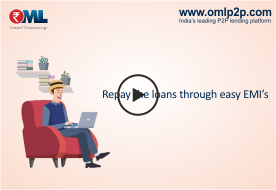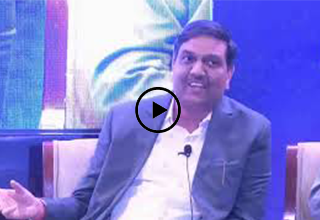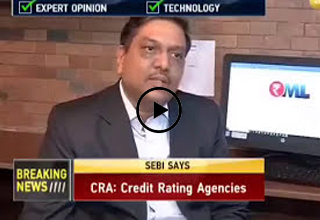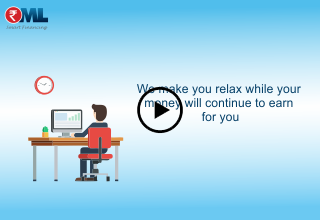Lending to peers may be worth a look
Feb 03,2021 Investing, OMLp2p Loans, Peer to Peer Lending, Investment, Digital Loan

Peer-to-peer lending can give higher returns at relatively lower risk in a falling interest rate scenario
Interest rates have come down significantly. Bank deposit rates have eased, and fixed income mutual fund running yields (portfolio YTMs) are much lower than earlier. In this situation, investors looking for relatively higher returns can eye an avenue known as peer-to-peer (P2P) lending. Let's first understand the concept.
P2P is a quasi-formal system where you give loans to people not known to you so far, in relatively smaller amounts, at high rates of interest, without any pledge of securities.
P2P platforms
The function of bringing together the so-far-unknown lenders and borrowers is done by service providers called P2P platforms. In today's digital age, this is done online through websites run by the these platforms.
Similar lending and borrowing in the unorganized sector has been around in India for a long time; the P2P system gives it a structure and it operates under Reserve Bank guidelines.
What is the attraction of P2P as an investing avenue? Returns are high, in double digits. This is much higher than bank deposits or debt mutual funds. What are the risks? If a loan turns bad, the P2P service provider does not take responsibility; they may assist you by providing guidance on legal remedies. This is as per RBI regulations; the guidelines state that the platform 'shall not provide or arrange any credit enhancement or credit guarantee'. The profile of the borrower is someone who probably could not avail of bank funding, may be due to a relatively lower CIBIL score, but does not want to go for even higher rates charged by informal money lenders.
If risks are there, what are the safeguards? There is overall risk management in terms of diversification i.e. limit on exposure to borrowers. If we look at the data on NPAs of banks, the industry i.e. large corporates constitute the highest NPA component (approximately 70% of the total bank NPAs), followed by services, agriculture, MSMA etc. Retail has the lowest NPA component (4% to 5%). Even if one borrower were to default, your exposure is only so much.
The gist of the RBI risk exposure guidelines is that between one lender and borrower the cap is Rs. 50,000, exposure of one lender across the P2P mechanism is Rs. 50 lakh and one borrower can avail a maximum of Rs. 10 lakh across all P2Ps.
The RBI also mandates these entities to obtain membership with all credit information companies and submit data. Though borrowers who come to the P2P system may not have a high CIBIL score, any digression would impact the CIBIL rating further.
One important safety aspect of the P2P system is the NPA level. The NPA data of that platform is supposed to be disclosed on the websites. For your due diligence, you should scan the data across platforms for choosing the one you would want to work with.
Saving on expenses
To be noted, in this mode of investment, you do not get the services of a professional fund manager like in mutual funds. But then, you save on the expenses as well as you are doing it yourself. To do your due diligence, start with a Google search for the P2P platforms. Check the RBI website for the list of approved P2P platforms (https://www.rbi.org.in/Scripts/BS_NBFCList.aspx) to ensure that the entity you are dealing with is approved.
The website will tell you, what they can do for you as a lender and what they cannot. Your choice of P2P platform also depends on the quality of information disclosed, quality of due diligence they do on borrowers, and the like.
As per regulations, P2P service providers have to do due diligence on the participants, credit assessment and risk profiling of the borrowers and disclosure to lenders, documentation of loan agreements and render services for recovery of loans.
Some of the other services you can expect are borrower segmentation based on CIBIL score, income bracket, and the like. The borrower may be required to obtain insurance (including personal life, permanent disability or loss of livelihood/employment) for the loan. P2P service providers may assist with a panel of lawyers to initiate legal action in case of non-payment of EMIs. User experience shows despite risks i.e. unsecured lending to people with relatively lower CIBIL score, the returns are decent. The rate of interest at which you lend is on the higher side, which is the compensating factor. Even if one or two borrowers were to default, they are not large corporates, hence they would not have the bandwidth of legal machinery or other support. The more diversified the lending, the potential few defaults are usually made up for by the paybacks and higher rate of interest.
This article was originally published on The Hindu (Author: Joydeep Sen).









Comments
Post Comment